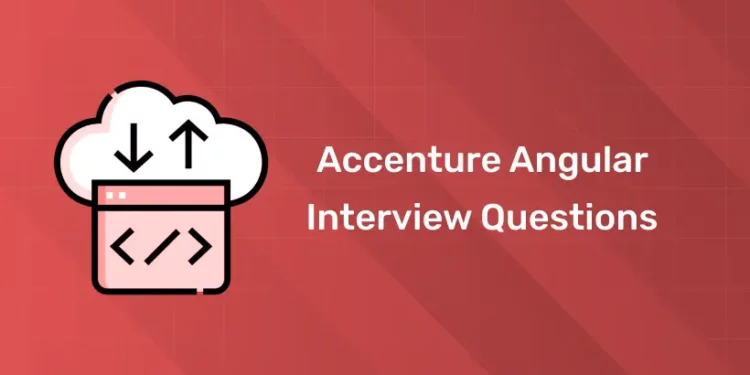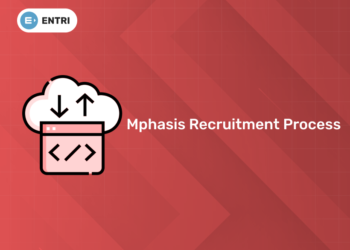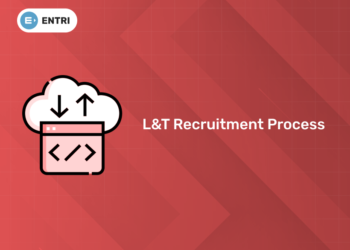Table of Contents
In today’s fast-paced digital world, Angular has become one of the most popular frameworks for building dynamic and responsive web applications. As businesses continue to adopt modern front-end technologies, the demand for skilled Angular developers is on the rise. Accenture, a global leader in digital, cloud, and consulting services, is no exception. The company seeks proficient Angular developers to create innovative solutions for its wide array of global clients.
If you’re preparing for an Angular developer interview at Accenture, this blog is tailored to provide you with valuable insights. Here, we’ve curated a list of the most frequently asked Angular interview questions to help you stand out.
Learn Full Stack Development with expert mentors! Get Free Demo Here!
Introduction
An Angular Developer at Accenture plays a key role in building dynamic and scalable web applications using Angular, one of the most popular front-end frameworks. Angular is widely used for developing high-performance, single-page applications (SPAs) that are responsive and seamless across different devices and platforms.
Role and Responsibilities
- Application Development: Angular developers at Accenture are responsible for designing and developing modern web applications using Angular, integrating front-end features with back-end systems, and ensuring smooth functionality.
- UI/UX Implementation: Developers work closely with UI/UX designers to transform wireframes and designs into fully functional and visually appealing user interfaces, ensuring a great user experience.
- Component Architecture: They are responsible for creating reusable and modular Angular components, optimizing application performance, and maintaining scalability.
- API Integration: Angular developers are involved in integrating RESTful APIs and handling asynchronous data fetching through services and HTTP requests, ensuring that front-end applications communicate effectively with back-end services.
- Testing and Debugging: Writing unit and integration tests using Angular testing frameworks (like Jasmine and Karma) is a key responsibility. They ensure the application is bug-free and performs efficiently across different environments.
- Version Control and Collaboration: Angular developers use version control systems like Git to collaborate with other developers, ensuring a smooth workflow and effective code management in a team-based environment.
Key Skills and Technologies
- Core Angular Concepts: Proficiency in Angular core concepts such as components, modules, directives, services, pipes, and dependency injection.
- RxJS: An understanding of reactive programming with RxJS and handling asynchronous operations using observables.
- TypeScript: Angular is built using TypeScript, so a deep knowledge of TypeScript features such as decorators, interfaces, generics, and classes is essential.
Why Join in Accenture?
1: Which of the following is a JavaScript framework/library?
Joining Accenture as an Angular developer offers several benefits that can be attractive for career growth and skill development. Here are some key reasons to consider:
1. Work on Cutting-Edge Projects
- Accenture is known for working with top-tier clients across various industries such as healthcare, finance, telecommunications, and more. As an Angular developer, you’ll have the opportunity to work on innovative projects, using modern web development technologies and frameworks to create scalable applications.
2. Global Exposure and Networking
- Accenture operates in over 120 countries and works with global clients. This provides developers with the opportunity to collaborate on international projects, interact with diverse teams, and gain exposure to different markets, industries, and cultures.
3. Career Development and Training
- Accenture invests heavily in its employees’ learning and development. As an Angular developer, you’ll have access to extensive training programs, certification opportunities, and career development paths. This helps keep your skills up-to-date and supports long-term career advancement.
4. Innovative Technologies and Tools
- At Accenture, you will be exposed to various emerging technologies such as cloud computing, AI, machine learning, DevOps, and microservices architecture. The company encourages developers to leverage these technologies to build modern, feature-rich applications, fostering a dynamic and innovative work environment.
5. Agile and Collaborative Work Environment
- Accenture promotes a collaborative, agile work culture where teams use methodologies like Agile and Scrum. This offers Angular developers the chance to be part of iterative, fast-paced projects that emphasize teamwork, continuous feedback, and adaptive planning.
6. Strong Focus on Digital Transformation
- Accenture is a leader in digital transformation and works closely with clients on their digital journeys. As an Angular developer, you can play a key role in building and modernizing web applications that contribute to the digital growth and innovation of major organizations.
7. Competitive Salary and Benefits
- Accenture offers competitive compensation packages along with various employee benefits like health insurance, retirement plans, flexible work arrangements, paid time off, and more. These incentives provide a strong work-life balance and financial stability.
 Start Coding Today! Enroll Now with Easy EMI Options.
Start Coding Today! Enroll Now with Easy EMI Options. 

Get Hired as a Full-Stack Developer: Master the Skills Employers Are Looking For!
Start Learning With EMI Payment OptionsAccenture Interview Preparation Tips for Angular
1. Master Angular Fundamentals
- Core Concepts: Make sure you thoroughly understand Angular basics such as modules, components, directives, services, dependency injection, and the Angular lifecycle.
- Data Binding: Be able to explain one-way and two-way data binding, as well as event binding.
- Templates and Directives: Know how to use structural and attribute directives like
ngIf,ngFor,ngClass, andngStyle.
2. Understand Advanced Angular Features
- Change Detection: Be ready to discuss how Angular’s change detection mechanism works and how to optimize it with strategies like
OnPush. - Routing and Navigation: Understand Angular’s routing module, lazy loading, route guards, and dynamic route parameters.
- RxJS and Observables: Familiarize yourself with RxJS operators (e.g.,
map,filter,mergeMap) and how they are used with observables for reactive programming. - State Management: If possible, study how to implement state management in Angular using NgRx or services with
BehaviorSubject.
3. Prepare for Hands-On Coding
- Component Interaction: Be prepared to code examples that demonstrate communication between parent-child components using
@Input(),@Output(), andEventEmitter. - Form Handling: Practice coding examples with both template-driven and reactive forms. Know how to use
FormControl,FormGroup, and validation techniques. - API Integration: Be familiar with making HTTP requests using
HttpClientModuleand handling asynchronous operations in Angular, including error handling and loading indicators.
4. Prepare for Optimization and Best Practices
- Performance Optimization: Understand how to optimize Angular applications by using lazy loading, optimizing change detection, and using
trackByin loops to improve rendering. - Tree Shaking and AOT: Be aware of how Angular’s Ahead-of-Time (AOT) compilation and tree shaking reduce bundle sizes and improve performance.
- Best Practices: Familiarize yourself with Angular coding best practices, including folder structure, avoiding anti-patterns, and creating reusable components and services.
5. Know Angular Testing
- Unit Testing: Study how to write unit tests for components and services using
JasmineandKarma. Know how to mock services and useTestBed. - End-to-End Testing: Understand how to use
Protractorfor end-to-end (e2e) testing in Angular, and the basics of setting up test cases and handling asynchronous operations.
6. Stay Updated on the Latest Angular Versions
- Make sure you are aware of the latest version of Angular and any new features or major changes introduced in recent releases. For example, Ivy rendering engine, differential loading, and improvements in Angular 12+.
7. Understand JavaScript and TypeScript Fundamentals
- Since Angular is built with TypeScript, you should have a solid understanding of TypeScript features like interfaces, classes, generics, and decorators.
- Brush up on JavaScript ES6+ features such as
letandconst, destructuring, arrow functions, promises, and async/await.
8. Prepare for Behavioral and Scenario-Based Questions
- Accenture places a strong emphasis on teamwork and communication. Be ready to answer behavioral questions on how you’ve worked with teams, managed project timelines, and handled difficult situations.
- Be prepared for scenario-based questions like how you would approach a performance bottleneck in an Angular application, or how you would optimize a slow-running component.
9. Work on Practical Angular Projects
- Build a small Angular project or two (such as a to-do list, e-commerce site, or admin dashboard) and host them on GitHub or a portfolio site. During the interview, you can showcase these projects to demonstrate your skills in action.
10. Soft Skills and Communication
- Accenture values clear communication and collaboration. Practice explaining complex Angular concepts in a simple and concise way. Being able to communicate your thought process during the interview is important, especially when solving coding problems.
Learn Full Stack Development with expert mentors! Get Free Demo Here!
Basic Accenture Angular Interview Questions and Answers
Here are 20 beginner-level Angular interview questions and answers that can be useful for Accenture interviews:
1. What is Angular?
Answer: Angular is a front-end framework developed by Google for building dynamic, single-page web applications. It allows for the creation of rich user interfaces using HTML, CSS, and TypeScript.
2. What is TypeScript in Angular?
Answer: TypeScript is a superset of JavaScript that provides optional static typing. Angular uses TypeScript to improve code quality and enhance error detection during development.
3. What is a Component in Angular?
Answer: A component is the basic building block of an Angular application. It controls a part of the UI and is composed of HTML, CSS, and TypeScript code. Each component is defined by a @Component decorator.
4. What is a Module in Angular?
Answer: A module is a container that groups related components, services, directives, and pipes. It is represented by the NgModule decorator and helps in organizing the code.
5. Explain the concept of Data Binding in Angular.
Answer: Data binding is a mechanism in Angular that connects the UI (view) and the business logic (model). It enables communication between the component class and the template using one-way or two-way data binding.
6. What are Directives in Angular?
Answer: Directives are instructions in Angular that modify the behavior or appearance of HTML elements. They come in three types: structural (*ngIf, *ngFor), attribute, and custom directives.
7. What is the purpose of the ngIf directive?
Answer: The ngIf directive conditionally renders or removes an element from the DOM based on a Boolean expression. If the condition is true, the element is added; otherwise, it is removed.
8. What is a Service in Angular?
Answer: A service is a class that contains reusable logic and is used for sharing data or functionality between different parts of the application. Services are often injected into components using Dependency Injection.
9. What is Dependency Injection in Angular?
Answer: Dependency Injection (DI) is a design pattern used to manage dependencies in Angular. It allows components and services to request dependencies from Angular’s injector, improving modularity and testability.
10. What is Routing in Angular?
Answer: Routing is a mechanism in Angular that allows navigation between different views or components. It is managed by the Angular Router, which maps URLs to components.
11. What is the role of the @NgModule decorator?
Answer: The @NgModule decorator defines an Angular module. It organizes an application into cohesive blocks, such as components, directives, and services, and declares their dependencies.
12. What is a Template in Angular?
Answer: A template in Angular is an HTML view with additional Angular-specific syntax, such as interpolation and directives. It defines how the component’s data should be displayed in the browser.
13. What are Pipes in Angular?
Answer: Pipes are used to transform data in Angular templates. For example, the date pipe can format a date object, and the uppercase pipe can transform text to uppercase.
14. What is the difference between ngIf and ngSwitch?
Answer: The ngIf directive is used for simple conditional rendering, while ngSwitch is used to switch between multiple views based on a specific condition, similar to a switch statement in programming.
15. What is Angular CLI?
Answer: Angular CLI (Command Line Interface) is a tool for scaffolding, building, and managing Angular projects. It helps in generating components, services, and modules, and automates the build process.
16. What is Lazy Loading in Angular?
Answer: Lazy loading is a technique in Angular that delays the loading of a feature module until it is needed, improving application performance by reducing the initial load time.
17. How do you handle forms in Angular?
Answer: Angular provides two approaches for handling forms: Template-driven forms (simpler, declarative approach using the template) and Reactive forms (more flexible, uses model-driven approach with FormGroup and FormControl).
18. What is Interpolation in Angular?
Answer: Interpolation is a way to bind data from the component class to the template. It uses the double curly braces syntax ({{ }}) to display dynamic content in the HTML.
19. What is Two-way Data Binding in Angular?
Answer: Two-way data binding allows automatic synchronization of data between the component and the view. It is achieved using the [(ngModel)] directive, which binds the model and the view together.
20. What is an Angular Lifecycle Hook?
Answer: Lifecycle hooks are methods that allow developers to tap into key events in a component’s life cycle, such as creation, updates, and destruction. Examples include ngOnInit, ngOnChanges, and ngOnDestroy.
Learn Full Stack Development with expert mentors! Get Free Demo Here!
Intermediate Accenture Angular Interview Questions and Answers
Here are 20 intermediate-level Angular interview questions and answers tailored for Accenture interviews:
1. What is Change Detection in Angular?
Answer: Change detection in Angular is the mechanism by which the framework checks the state of the application and updates the DOM when data changes. Angular uses zone.js to detect when asynchronous tasks complete, and it then triggers change detection automatically.
2. What is the difference between @Input and @Output in Angular?
Answer: @Input allows a parent component to pass data to a child component, while @Output allows the child component to send data back to the parent component by emitting events through an EventEmitter.
3. Explain the purpose of ngOnChanges in Angular.
Answer: ngOnChanges is a lifecycle hook that is called whenever an input-bound property of a component changes. It allows you to react to changes to @Input() data in child components.
4. What is the difference between Observable and Promise in Angular?
Answer: Observables are lazy and can handle multiple values over time (streams), while Promises are eager and resolve to a single value. Observables offer more flexibility, such as cancellation and retrying operations, and are part of Angular’s reactive programming model.
5. How does Angular handle error handling in HTTP requests?
Answer: Angular provides a built-in HttpClient module that supports error handling using the catchError operator from RxJS. This allows developers to gracefully handle HTTP errors like network failures or incorrect API calls.
6. What is AOT (Ahead-of-Time) Compilation in Angular?
Answer: AOT compilation pre-compiles the Angular templates and components at build time, rather than at runtime. This reduces the size of the application, increases the loading speed, and catches template errors early.
7. What is Dependency Injection (DI) Hierarchical Injector in Angular?
Answer: Angular uses a hierarchical dependency injection system. The injectors form a tree, with the root injector at the top. Components can have their injectors, and Angular resolves dependencies by looking for the required service in the local injector, moving upward if needed.
8. What are Guards in Angular Routing?
Answer: Guards in Angular are used to control navigation to and from routes. There are four types: CanActivate, CanActivateChild, CanDeactivate, and Resolve. They allow or deny access to routes based on logic, such as authentication.
9. What is a Singleton Service in Angular?
Answer: A singleton service in Angular is a service that is instantiated only once and shared across the entire application. By providing a service in the root module (@Injectable({ providedIn: 'root' })), it becomes a singleton.
10. Explain ViewEncapsulation in Angular.
Answer: ViewEncapsulation defines how styles are applied to components. Angular provides three encapsulation modes: Emulated (default, styles are scoped), None (styles are global), and ShadowDOM (uses the shadow DOM to encapsulate styles).
11. What is a Resolver in Angular?
Answer: A resolver is used in Angular routing to pre-fetch data before a route is activated. It allows data to be retrieved asynchronously and provided to the component before rendering, ensuring that the component has the necessary data upon loading.
12. How does Angular handle lazy loading of modules?
Answer: Angular enables lazy loading by defining routes in the RouterModule using the loadChildren property. This allows feature modules to be loaded only when the associated route is visited, improving the application’s initial load performance.
13. What is ng-content and how is it used?
Answer: ng-content is used for content projection, which allows you to insert dynamic content from a parent component into the template of a child component. It acts as a placeholder in the child component, and the content is projected from the parent component.
14. What are Angular Pipes, and how do you create a custom pipe?
Answer: Angular Pipes transform data in templates. To create a custom pipe, use the @Pipe decorator and implement the PipeTransform interface. Custom pipes allow for reusable transformation logic for specific data formats.
15. Explain how you would optimize performance in an Angular application.
Answer: Performance optimization techniques in Angular include using AOT compilation, lazy loading modules, employing OnPush change detection strategy, debouncing user input, optimizing bundle sizes using tools like Webpack, and using pure pipes for transformation.
16. What is @ViewChild and @ContentChild in Angular?
Answer: @ViewChild is used to access a template reference or a child component instance in the view, while @ContentChild is used to query and get references to projected content passed into the component via <ng-content>.
17. What is the role of FormBuilder in Angular Reactive Forms?
Answer: FormBuilder is a service in Angular used to create and manage forms more efficiently in reactive forms. It simplifies the process of creating FormGroup and FormControl instances with less boilerplate code.
18. Explain the async pipe in Angular.
Answer: The async pipe in Angular automatically subscribes to an observable or promise and returns its latest value. It also handles unsubscription when the component is destroyed, avoiding memory leaks.
19. What is the purpose of RouterModule.forRoot() and RouterModule.forChild()?
Answer: RouterModule.forRoot() is used to register the main application routes and initialize the router at the root level, whereas RouterModule.forChild() is used to register routes within a feature module in a lazy-loaded module.
20. What is the purpose of ngZone in Angular?
Answer: ngZone is an Angular service used to control the scope of asynchronous operations that can trigger change detection. By using ngZone.runOutsideAngular(), you can perform actions that won’t trigger change detection, improving performance for heavy operations.
Learn Full Stack Development with expert mentors! Get Free Demo Here!
 Start Coding Today! Enroll Now with Easy EMI Options.
Start Coding Today! Enroll Now with Easy EMI Options. 

Get Hired as a Full-Stack Developer: Master the Skills Employers Are Looking For!
Start Learning With EMI Payment OptionsAdvanced Accenture Angular Interview Questions and Answers
1. What is the Change Detection Strategy in Angular, and how can you optimize it?
Answer: Angular provides two change detection strategies: Default and OnPush. In the default mode, Angular checks every component’s change, but OnPush optimizes performance by checking only when the component’s inputs change. To optimize, use OnPush for components that don’t need frequent updates and immutable data structures.
2. Explain how Angular’s Dependency Injection works at a multi-level hierarchy.
Answer: Angular’s Dependency Injection (DI) system forms a hierarchy, where each component has its injector. Services provided at the module level (root injector) are available throughout the app, while services provided at the component level are specific to that component and its children.
3. What is the difference between @HostListener and @HostBinding?
Answer: @HostListener is used to listen for events on the host element, allowing you to react to events like clicks or key presses. @HostBinding is used to bind a property (e.g., class, style) of the host element to a component property dynamically.
4. How would you implement state management in Angular without using NgRx?
Answer: Without NgRx, you can implement state management using Angular services as singletons to store and manage state. Use BehaviorSubject from RxJS to store the application state and emit updates. Components can subscribe to this state and react accordingly.
5. What are the key differences between Reactive Forms and Template-Driven Forms in Angular?
Answer: Reactive Forms offer more control and are model-driven, making them suitable for complex forms. They use FormControl, FormGroup, and FormBuilder classes. Template-Driven Forms are easier for simple forms, rely heavily on the template, and use directives like ngModel.
6. What is Tree Shaking in Angular?
Answer: Tree shaking is a build optimization technique that removes unused code during the build process. Angular, using tools like Webpack, eliminates dead code to reduce the size of the final bundle, improving performance.
7. How does Angular handle memory leaks, and how can you prevent them?
Answer: Angular’s automatic garbage collection helps manage memory, but leaks can still occur, especially with subscriptions. To prevent memory leaks, always unsubscribe from observables using takeUntil, async pipe, or ngOnDestroy() lifecycle hook for manual unsubscription.
8. What is Dynamic Component Loading in Angular, and how can you achieve it?
Answer: Dynamic component loading allows components to be created and inserted into the DOM at runtime. This can be achieved using Angular’s ComponentFactoryResolver or more recently, ViewContainerRef.createComponent().
9. How does Angular handle animations, and what is the role of the @angular/animations module?
Answer: Angular’s animation system is built on top of the @angular/animations module, which allows the definition of animations using triggers and states. Animations are applied by associating triggers with elements in templates and controlling transitions between states.
10. Explain the role of ngZone.runOutsideAngular() and its benefits.
Answer: ngZone.runOutsideAngular() allows you to execute code that doesn’t trigger change detection. It is beneficial when performing operations that don’t impact the UI, such as heavy computations, to prevent unnecessary change detection cycles and improve performance.
11. What are custom structural directives, and how do you create one in Angular?
Answer: Custom structural directives manipulate the DOM structure (e.g., adding or removing elements). To create one, use the @Directive decorator and implement TemplateRef and ViewContainerRef. For example, create a directive that shows/hides content based on a condition.
12. What are Zone.js and its significance in Angular?
Answer: Zone.js is a library that patches asynchronous operations (e.g., setTimeout, HTTP requests) and notifies Angular when these operations complete. Angular uses Zone.js to manage change detection by triggering updates when tasks complete.
13. How do you optimize bundle size in an Angular application?
Answer: Bundle size optimization strategies include lazy loading, using AOT compilation, enabling Tree Shaking, minimizing external libraries, compressing assets, and using Webpack to split bundles.
14. What is Ivy Renderer, and how does it differ from the older View Engine in Angular?
Answer: Ivy is Angular’s latest rendering engine, designed to improve compilation speed, reduce bundle size, and provide more efficient change detection. It allows better tree-shaking and lazy loading. Ivy also provides new APIs for dynamic component rendering.
15. How does Angular handle i18n (Internationalization) and what are its key features?
Answer: Angular provides built-in support for i18n via the @angular/localize package. It allows you to translate content into different languages by extracting messages using ng extract-i18n, creating translation files, and then building the app for different locales.
16. What is the difference between Subject, BehaviorSubject, ReplaySubject, and AsyncSubject in Angular?
Answer:
Subject: Emits data to all subscribers from the moment of subscription.BehaviorSubject: Emits the latest value to new subscribers and subsequent values to all.ReplaySubject: Replays a specified number of previous values to new subscribers.AsyncSubject: Emits only the last value when the observable completes.
17. What is the purpose of the Renderer2 service in Angular?
Answer: Renderer2 is a service for safely manipulating DOM elements and attributes. It provides an abstraction layer that ensures compatibility across different rendering environments (e.g., server-side rendering with Angular Universal).
18. How do you test Angular components that depend on services using TestBed?
Answer: Angular provides the TestBed utility for configuring and initializing the environment for unit testing. Services can be mocked using TestBed.configureTestingModule() with spyOn() or MockService to test components independently of service implementations.
19. What is ngx-translate and how do you integrate it into an Angular application?
Answer: ngx-translate is a library that provides internationalization for Angular applications. It allows you to load translations asynchronously from JSON files and switch languages dynamically using services like TranslateService and TranslatePipe.
20. What is Angular Universal, and what benefits does server-side rendering (SSR) provide?
Answer: Angular Universal enables server-side rendering of Angular applications. It improves performance by rendering HTML on the server, reducing the time to first contentful paint (FCP), improving SEO, and enhancing the user experience for slow networks or devices.
Learn Full Stack Development with expert mentors! Get Free Demo Here!










